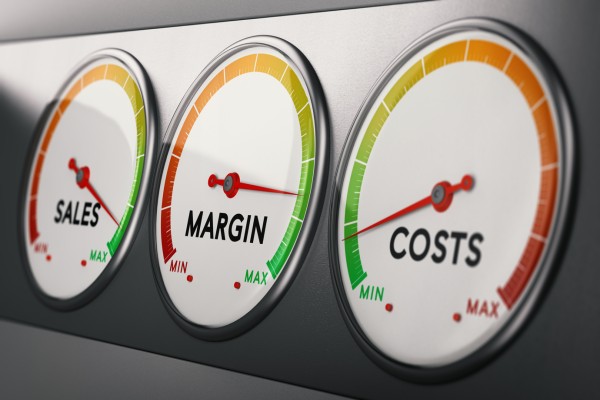Understand And Improve Gross Margin In Your Business

Gross margin
Understanding your financial results and trends is a vital component of running a successful business. And whilst accurate and up-to-date information is important in all businesses, in today’s “data rich, time poor” environment it is easy to become overloaded with information that does not help you advance your business’s position. The key to this, like most things in business, is to focus on the quality of information over quantity.
And one of the most powerful pieces of information in a business is an in-depth understanding of your gross profit margins. An understanding of Gross profit margins provides a benchmark for performance against competitors, can help to set effective pricing, reveals opportunities to reduce COGS and at its most useful can be upstream of strategy by informing the product/service lines you should be investing your time and money in.
What is “Gross Profit Margins”?
Gross Profit margin is a performance indicator that is simple to calculate. First, you calculate your gross profit – which is sales revenue minus the costs associated with producing the company’s goods and services (often referred to as COGS). Gross profit is then divided by sales revenue and the result is multiplied by 100 to obtain the gross profit margin percentage.
GP Margin = ((Sales Revenue – Cost of Sales) / Sales Revenue) X 100%
An effective calculation ensures that the Cost of Sales is accurately recorded, and what this looks like can vary by industry. For manufacturers, the cost of sales—or cost of goods sold (COGS)—includes costs such as raw materials and wages of workers directly involved in manufacturing products. If you are a retailer and wholesaler, the calculation will usually include the purchase cost of the goods being sold, as well as shipping and delivery costs. For service organizations, it will include labour and other direct costs to deliver these services, such as 3rd party contractors and subject expert fees.
Why is Gross Margin Important?
Gross profit margin is a good gauge for measuring how efficiently companies make money as it measures profit on products/services as a percentage of sales revenue. This means it is also a good indicator of a business’s profitable growth prospects.
Gross Profit Margin also helps you to work out what % of your sales contribute to profit (known as your contribution margin) which you can use to help you to work out things like what revenue you need for the business to break even and reach certain profit targets.
An error that a lot of smaller, under-resourced businesses tend to make is to omit certain costs in their gross margin analysis – such as direct labour – which overstates gross margins. Including these costs will allow you to understand exactly how much it costs you to make your product or service which goes directly to the heart of determining if your business model is sustainable long term.
Tracking the trends in your Gross margin is also very useful for a business and is a reliable indicator of the financial health of the business. Understanding your margins, how they are trending and why can help to inform you on the efficiency of your production, your input costs and whether you have got your pricing to the market right.
Reporting and Best Practice Use
Gross margin reporting, when applied well, can give you very valuable information to make impactful decisions about your business’s strategy. Reporting on your Sales & Gross Margins by i. product or service, ii. category and iii. customer are three metrics that I recommend for businesses looking to get insights into their current performance and guidance for their future direction. By knowing where the most profitable areas of your business and the market are, you create an opportunity to capitalise on this information by directing your efforts into these areas. On the other end of the spectrum, this information can also bring to light areas that might need improvement, where input costs or customer pricing might need reviewing or where a processing error may have occurred in your customer invoicing or supplier billing.
Reporting on these metrics should be done as a minimum every month and a trending analysis should be done vs. prior months to be able easily to identify instances where profit margins have gone up or down without an obvious explanation. Depending on the size of your business many accounting systems also offer the ability to set things up so you automatically receive these reports to your email at a frequency you deem appropriate (it could be monthly, fortnightly or even daily). This means you don’t have to wait until the end of a month to take action on something that needs your attention now!
In your business’s sales & performance analysis, there is hardly a more important metric than your Gross Profit Margin. As a good indicator of the long-term viability of your business model and future success, you should be reviewing your margins across the different areas of your business regularly and this information should inform your decision-making and forward planning.
Key Takeaways:
- Gross Profit Margin = (Sales Revenue – Cost of Sales)/Sales Revenue
- An effective calculation involves the Cost of Sales being recorded accurately and what this looks like can vary by industry.
- Sales & Gross Margins by i. product or service, ii. category and iii. customer are three metrics that I recommend for businesses looking for insights into current performance and future direction.
- Knowing your Gross Profit margins, how they are trending and why can help to inform you on the efficiency of your production, input costs and pricing.
Joseph Essey – Associate Partner – Small & Medium Business Advisory, Accounting and Financial Control

Also Read: What Are The Great Ways To Kickstart Your Business In 2023?



